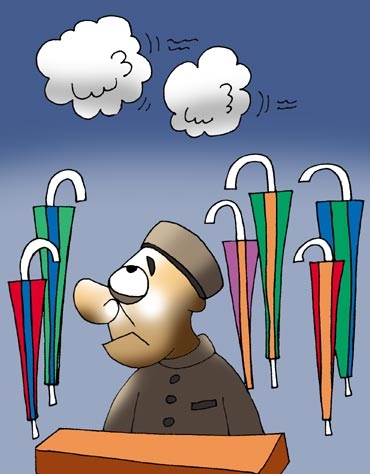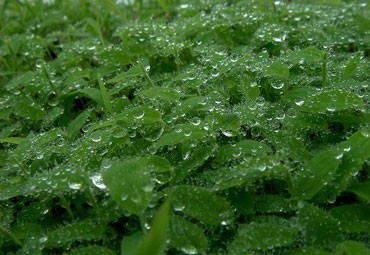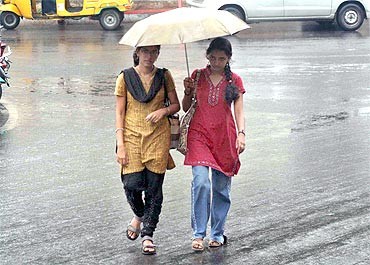Photographs: Illustrations: Uttam Ghosh Sanjeeb Mukherjee in New Delhi
The India Meteorological Department's (IMD's) earlier forecast for southwest monsoon has surprised many, as from a relatively comfortable situation in April, the performance of monsoon this year looks slightly shaky now.
The department, in its second estimate, has lowered the cumulative forecast for the entire country during the four-month monsoon season (June-September), from normal to below normal in a span of less than three months.
Though the drop is marginal at 95 per cent of the Long Period Average (normal rains are categorised as normal if it falls between 96 and 100 per cent of LPA) and given that the prediction comes with a model error of plus or minus four per cent, there is little chance of a repeat of 2009, but given the Met department's track record in predicting low monsoon years, there are definite worries.
...
IMD's track record clouds 2011 monsoon forecast
Image: IMD Director General Ajit TyagiPhotographs: Courtesy, PIB
"There are some concerns, but definitely 2011 will not be a repeat of 2009 when we had predicted a normal monsoon, but actual rains were far less," assures IMD Director General Ajit Tyagi.
In 2009, IMD had initially predicted southwest monsoon to be 96 per cent of LPA, just bordering on normal and below normal. But, the actual rains were almost 77 per cent of LPA, leading to the worst drought in the country in almost three decades.
Though, the department did revise its initial forecast downward to 88 per cent, the actual rains were still much less than the revised numbers.
"Our forecasting systems and methodology have changed vastly in the last few years and we can now give even hourly updates and are better equipped to handle any unforeseen situation," Tyagi said.
...
IMD's track record clouds 2011 monsoon forecast
Since 2007, IMD's prediction for southwest monsoon has been fairly accurate, except for 2009.
"Ever since IMD has started adopting a new model of forecasting in 2007, the track record has not been particularly bad, except for 2009 when all predictions went horribly wrong," said Tanushree Majumdar, chief economist National Commodities and Derivatives Exchange of India, India's largest exchange for agricultural commodities.
The new model based on the ensemble technique of weather forecasting used eight new predictors, which helped in prediction of rainfall almost two months in advance.
Given the critical importance that southwest monsoon has not only on agriculture as more than half of the total arable land in the country does not have proper irrigation facilities, but also on the overall economic growth, it is imperative that IMD makes fairly accurate predictions.
...
IMD's track record clouds 2011 monsoon forecast
In 2004, the department had predicted southwest monsoon to be 98 per cent of LPA initially, but the actual rains were around 87 per cent. In 2002, IMD had initially predicted southwest monsoon to be 101 per cent of LPA, but the actual rains were 81 per cent.
"I have some confidence on IMD's forecast this year around as other agencies like the Korean and US weather forecasting agencies are also saying the same thing, that southwest monsoon in 2011 across the country would be fairly normal," said Ramesh Chand, director, National Centre for Agricultural Economics and Policy Research.
He said below normal monsoon did not have much meaning, as final farm output depends on distribution and spread of showers.
...
IMD's track record clouds 2011 monsoon forecast
Madan Sabnavis, chief economist with Care Ratings, said in years when southwest monsoon had not been good, kharif production had not suffered much because of better management.
In 2009, despite large tracts of farmland in eastern India remaining devoid of rains, the actual drop in kharif paddy production - which was expected to be worst effected by low rains - was around 10 per cent.
Overall, that year, total paddy production in the country (both kharif and rabi included) was down by just 10 million tonnes despite a bad kharif yield as stress was laid on improving rabi paddy production to make up for the shortfall.







article